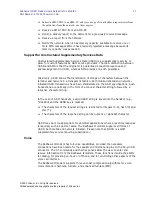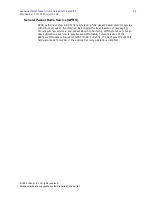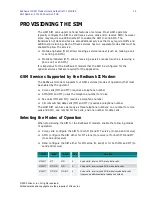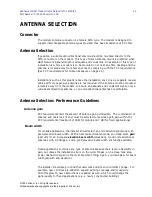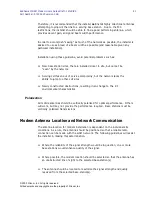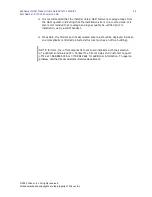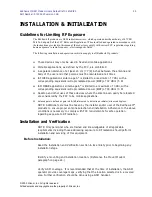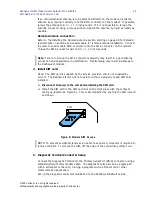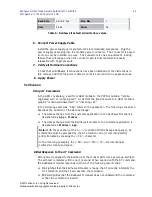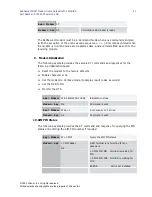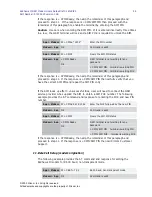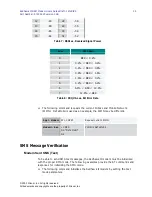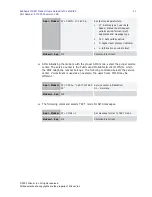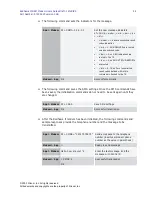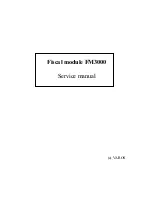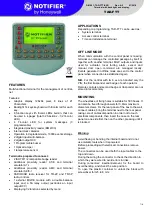
Redhawk II GSM Modem Users Guide
Draft: 10/30/00
17
Part Number: 07100020 version 00B
© 2000 Xircom, Inc. All rights reserved.
All trademarks and copyrights are the property of Xircom, Inc.
!
Submit a SMS TPDU to an SMS-SC, and store a copy of it until either a report arrives from
the network or from the network, or a timer expires
!
Receive a SMS TPDU from an SMS-SC
!
Return a delivery report to the network for a previously received message
!
Receive a report from the network
!
Notify the network when it has memory capacity available to receive one or
more SMS messages after it has previously rejected a message because its
memory capacity was exceeded
Support for Unstructured Supplementary Services Data
Unstructured Supplementary Services Data (USSD) is a supplementary service to
allow for custom features by GSM service providers. The main distinction between
USSD and SMS is that the originator is guaranteed a real-time response and
acknowledgement in USSD, whereas SMS provides no such guarantee.
Put simply, USSD allows the transmission of strings of characters between the
terminal and network in a transparent fashion. Both mobile-initiated and network-
initiated USSD transactions have been standardized in the GSM specifications. Such
transactions are normally in the form of a request character string followed by a
response character string.
In the case of GSM handsets, a valid USSD string is keyed into the handset (e.g.,
*#1446#) and the SEND key is pressed.
!
The characters of the request string are restricted to integers (0-9), hash (#) and
star (*).
!
The characters of the response string can be numeric or alphabet character.
USSD may be more appropriate for potential applications where a real-time response
is required, such as point of sales. The Redhawk II modem supports all forms of
USSD, both mobile and network initiated. Please note that (USSD is a GSM
supplementary service requiring subscription.)
Voice
The Redhawk II modem has full voice capabilities, provided the necessary
connections have been made for the speaker and microphone pins on the 60-pin I/O
connector. The AT commands and their responses allow the user to enter and
receive information from the Redhawk II modem. These functions include the ability
for dialing, for providing on-hook or off-hook, and for controlling other aspects of the
voice call interface.
The Redhawk II modem supports three vocoder compression algorithms for voice
communication: half-rate, full-rate, and enhanced full-rate (EFR)















